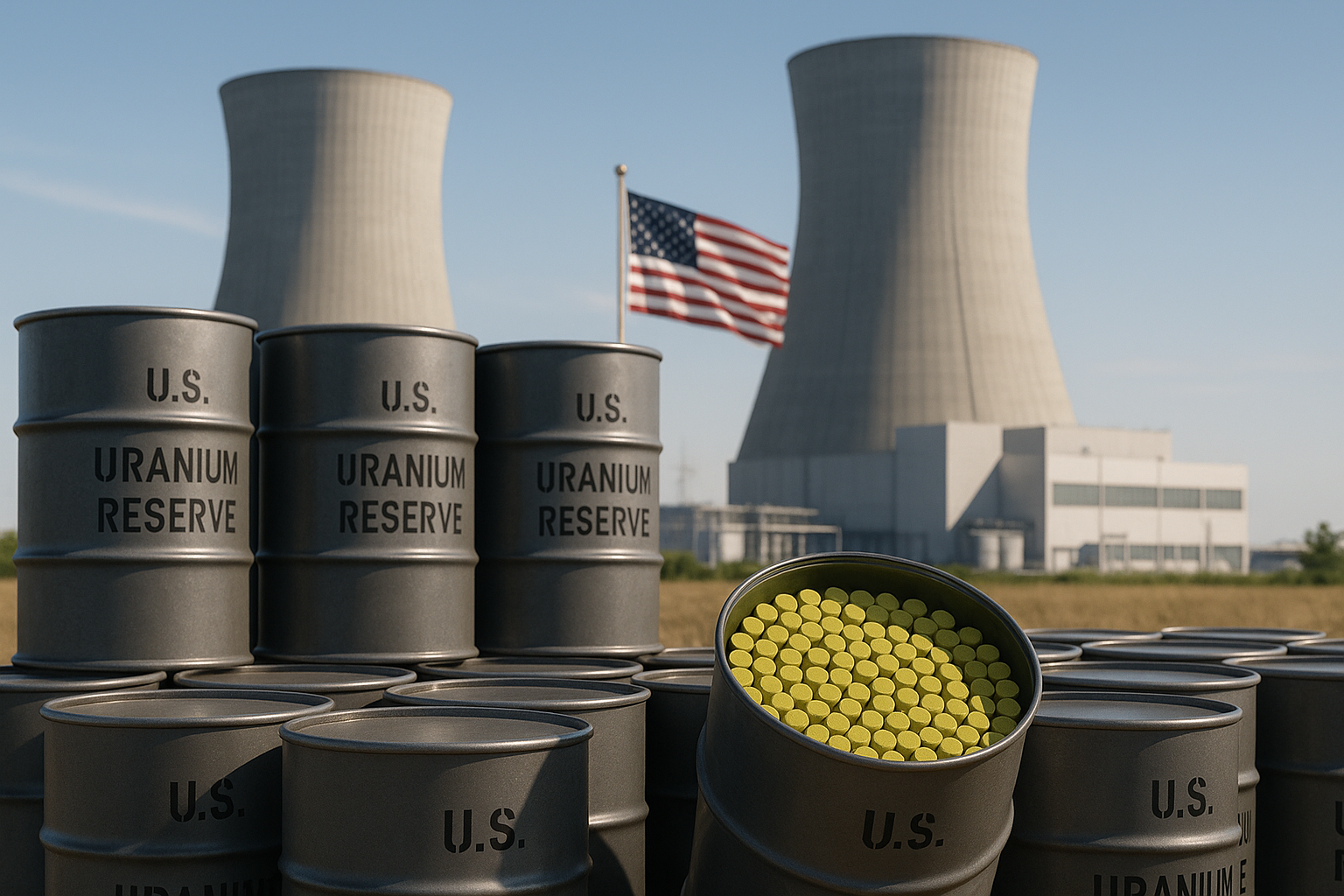The Department of Energy just put $3.2 billion of chips on the table, announcing a decade-long plan to build up America's strategic uranium reserve. The goal? Pretty straightforward: stop being so dependent on Russian uranium at a time when relations between Washington and Moscow are, well, let's just say "not great."
I've been tracking energy policy shifts since the pre-pandemic era, and this move feels different. It's not just bureaucratic shuffling—it's a genuine pivot in how America thinks about nuclear power.
Look, for years nuclear was the energy source nobody wanted to talk about at dinner parties. Too controversial. Too expensive. Too... nuclear. But climate change has a funny way of rearranging priorities, doesn't it?
The U.S. currently imports a staggering 95% of its uranium needs, with Russia providing about a quarter of that supply. In the current geopolitical environment, that's about as comfortable as sleeping on a bed of nails.
"We've allowed ourselves to become dangerously dependent on adversarial nations for our energy security," a senior Energy Department official told me last week, speaking on background because they weren't authorized to comment publicly. "This isn't just about uranium—it's about national resilience."
What makes uranium so fascinating (at least to energy nerds like me) is its almost magical energy density. One tiny fuel pellet contains the same energy as a TON of coal. Think about that for a second. A single pellet!
But here's where things get complicated.
The uranium market is nothing like other commodity markets. It's bizarre, frankly—highly regulated, concentrated among few producers, and tangled in a web of geopolitical considerations that would make a game theorist's head explode.
Since the Fukushima disaster in 2011, uranium prices languished for years. Then—boom!—they shot up 125% over the last two years. Mining stocks followed suit. Cameco up 183% since January 2022. Uranium Energy Corp jumping 136%. Investors clearly smell something in the wind.
(I should note I don't own shares in any uranium companies. Just reporting the numbers here.)
The timing of this announcement isn't accidental. Nuclear power is experiencing something of a renaissance. Small modular reactors are attracting serious investment. Even some environmental groups—traditional nuclear skeptics—are reconsidering their stance in light of climate goals.
"We're seeing the strangest political realignment around nuclear," Dr. Maria Korsnick, head of the Nuclear Energy Institute, explained when I interviewed her last month. "Former opponents becoming supporters, traditional advocates emphasizing new aspects. The old tribal positions are breaking down."
The irony is almost too perfect. Environmental activists who once chained themselves to uranium mine gates now grudgingly acknowledge nuclear's zero-carbon advantages. National security hawks who preached free-market gospel now demand government intervention in uranium supply chains.
Funny how reality has a way of messing with ideological purity, isn't it?
This uranium reserve plan can be viewed through two lenses. First, as genuine energy security—building a stockpile against supply disruptions, similar to the Strategic Petroleum Reserve. Second, as disguised industrial policy—essentially subsidizing domestic mining and processing capabilities that withered over decades.
Truth is, it's both. And that's... fine? Sometimes policy can serve multiple masters.
What's particularly interesting is how uranium stockpiling differs from other strategic reserves. Unlike oil, uranium doesn't meaningfully degrade over time. You can store the stuff for decades with virtually no loss of energy potential. The carrying costs are mainly financial rather than physical—a bean-counter's concern, not a technical one.
But—and this is crucial—creating a government uranium reserve doesn't magically solve nuclear power's other challenges. The crushing capital costs remain. The regulatory maze still exists. Public perception issues haven't disappeared.
I mean, just ask Southern Company shareholders about Plant Vogtle's budget-busting odyssey. Originally estimated at $14 billion, final price tag? Nearly double that. Ouch.
The question nobody seems able to answer convincingly: Is this stockpiling program signaling a deeper, more durable shift in nuclear policy, or just another temporary government intervention that'll fade with the political winds?
My hunch, after covering this sector for years? It's the former. The climate math doesn't lie, and the geopolitical pressures aren't vanishing anytime soon. Nuclear power sits at this unique intersection of energy security, climate policy, and superpower competition—perhaps the only technology with that distinction.
For investors and policy wonks alike, the real action isn't just in mining, though. Keep your eyes on conversion and enrichment capacity. Those are the genuine bottlenecks in the nuclear fuel cycle—and potentially where the highest margins might emerge.
This whole situation reminds me of the semiconductor industry's recent journey. For decades, we happily offshored manufacturing, chasing cheaper production. Then suddenly, chips were deemed "critical infrastructure" and reshoring became a national priority.
Same story, different element on the periodic table.
Whether this particular $3.2 billion program succeeds or not, the underlying forces pushing nuclear power back into the conversation aren't going away. And that means uranium—that peculiar, energy-dense metal that powers everything from submarines to cancer treatments—might finally be getting its moment in the sun.
Or should I say... its moment in the reactor?
